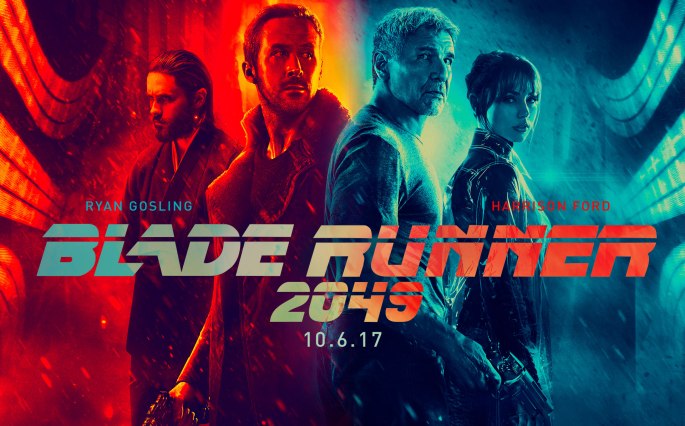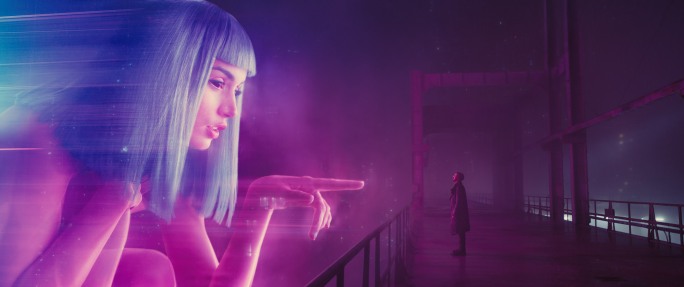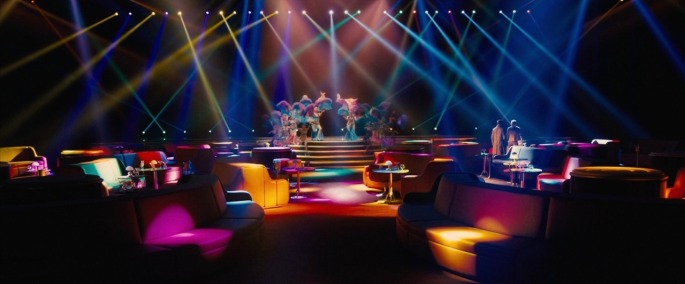
Thirty-five years after the release of the original, Blade Runner 2049 had a tough act to follow on all accounts. 1982’s Blade Runner has been hailed as one of the most visually impressive and well written science fiction films of the past fifty years, not to mention the huge gap in time between the two films. So, does Blade Runner 2049 hold up to the legacy of it’s predecessor, or does it fall flat?
Officer K (Ryan Gosling) lives in the always-rainy, overcrowded Los Angeles of 2049. He is a blade runner: a police officer specially designated to track down and “retire” (read: kill) robots known as replicants, which are virtually identical to human beings. These replicants have a complex history, first being created by the Tyrell Corporation, before being outlawed, and then brought back by Ninder Wallace (Jared Leto). He lives with his hologram girlfriend, Joi (Ana de Armas), and generally tries to scrape by. While out on his job one day, he uncovers a mysterious set of remains on the property of a replicant he has retired. These remains lead him on a journey to find former blade runner Rick Deckard (Harrison Ford), who disappeared over thirty years ago. Along the way, K begins to suspect that there is more to replicants and himself than he ever thought possible. Will K discover both his own past and Deckard, or will he fail his mission?

The obvious first thing to point out about Blade Runner 2049 is its stunning visuals. The first movie was praised highly for this, and it’s clear that its sequel lives up to to the hype. With cinematography by Roger Deakins, who worked on films like The Shawshank Redemption and The Big Lebowski, the visuals in 2049 are absolutely gorgeous. Individual shots get across so much information to the audience without any kind of dialogue or even actors being on screen. The cinematography presents the sci-fi world of Blade Runner to the audience in a way that no other part of the film could. The colors, lighting, and camera angles all serve to make the movie both beautiful to look at and progress plot.
The special effects were also very well done. As mentioned before, one of the characters is a hologram, and the CGI used to turn a real person into a hologram was really beautifully done. The best part of Joi’s character, though, was that the actors all interacted with her like she really wasn’t there, and she interacted with things as if she really were a hologram. Nobody touches her, and she doesn’t ever touch anything, their hands hovering around either around her or her hands hovering over whatever she was trying to “touch.” However, none of the special effects feel inconsistent with the special effects of the first movie. This really helps to make both Blade Runners feel like they take place in the same universe.
The acting is spectacular. Ryan Gosling’s performance as K goes from controlled to highly emotional in a very believable way. I loved K’s chemistry with Joi; it seemed like they looked at the relationship between Rick Deckard and his love interest, Rachael, in the first movie and said “we can do that, but better.” Also, this is easily one of Harrison Ford’s best performances. I didn’t like his character in the original Blade Runner, but both his performance and the writing really made him much more sympathetic and likable.

In a world of Hunger Games-esque, PG-13 science fiction, it’s refreshing to have an R-rated movie with actual adult themes. Blade Runner 2049‘s exploration of environmentalism, technology, and what it truly means to be human is beautiful, tragic, and well-executed. While the three-hour runtime makes some people nervous, I was actually shocked that it was over as soon as it was. While it can never be as influential as the original, it definitely is just as fantastic.
Grade: A+
10/18/17
